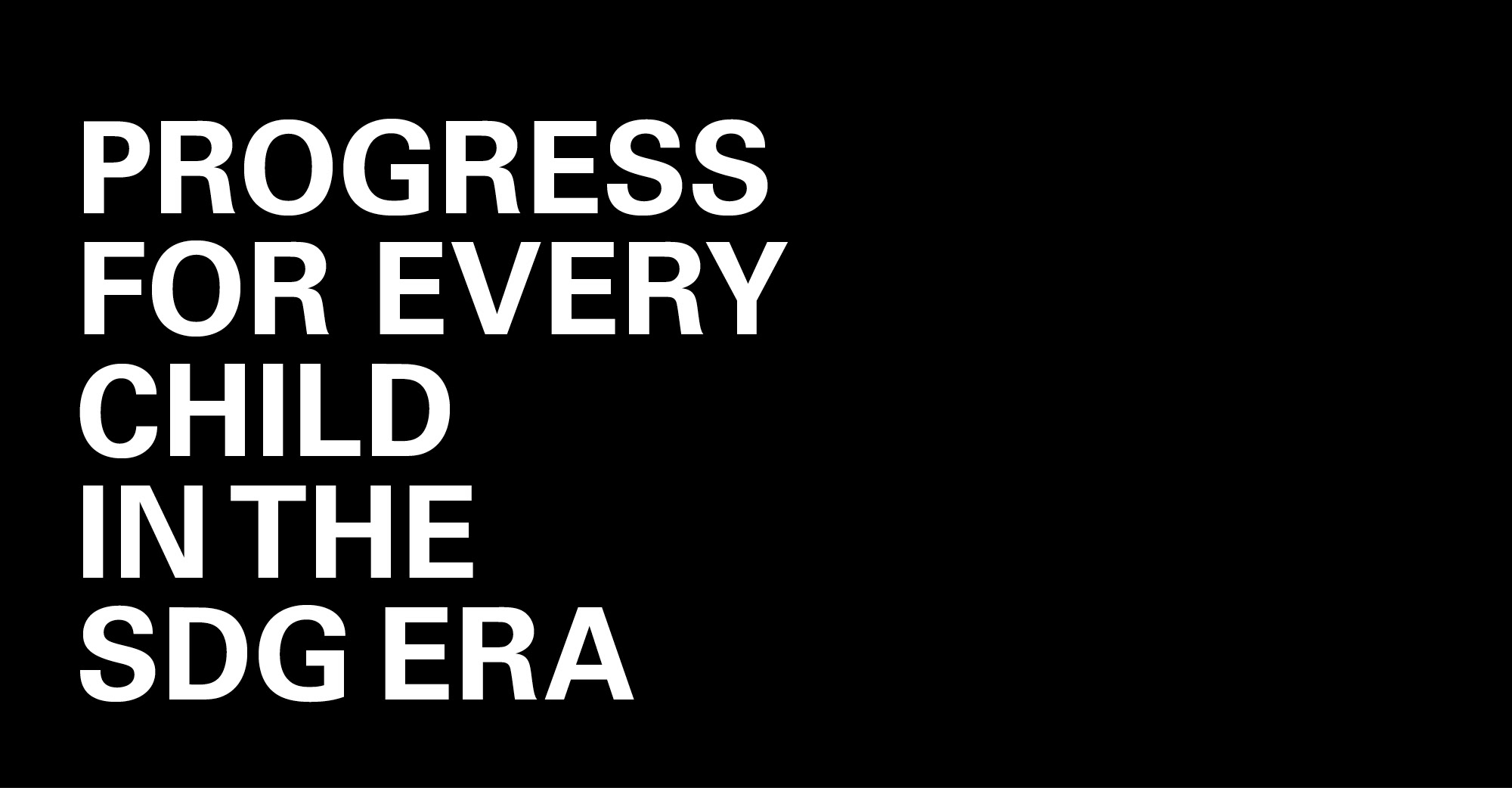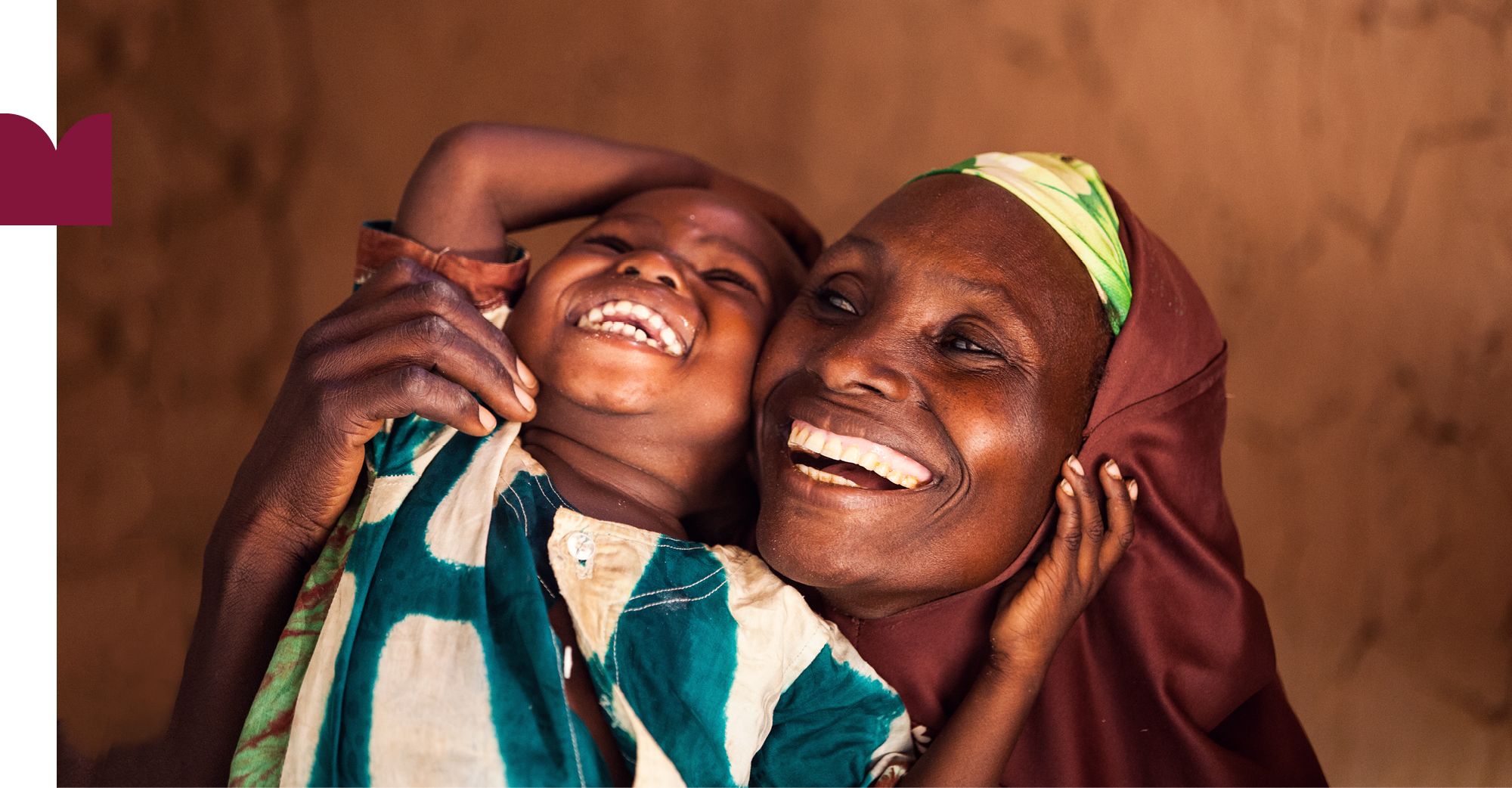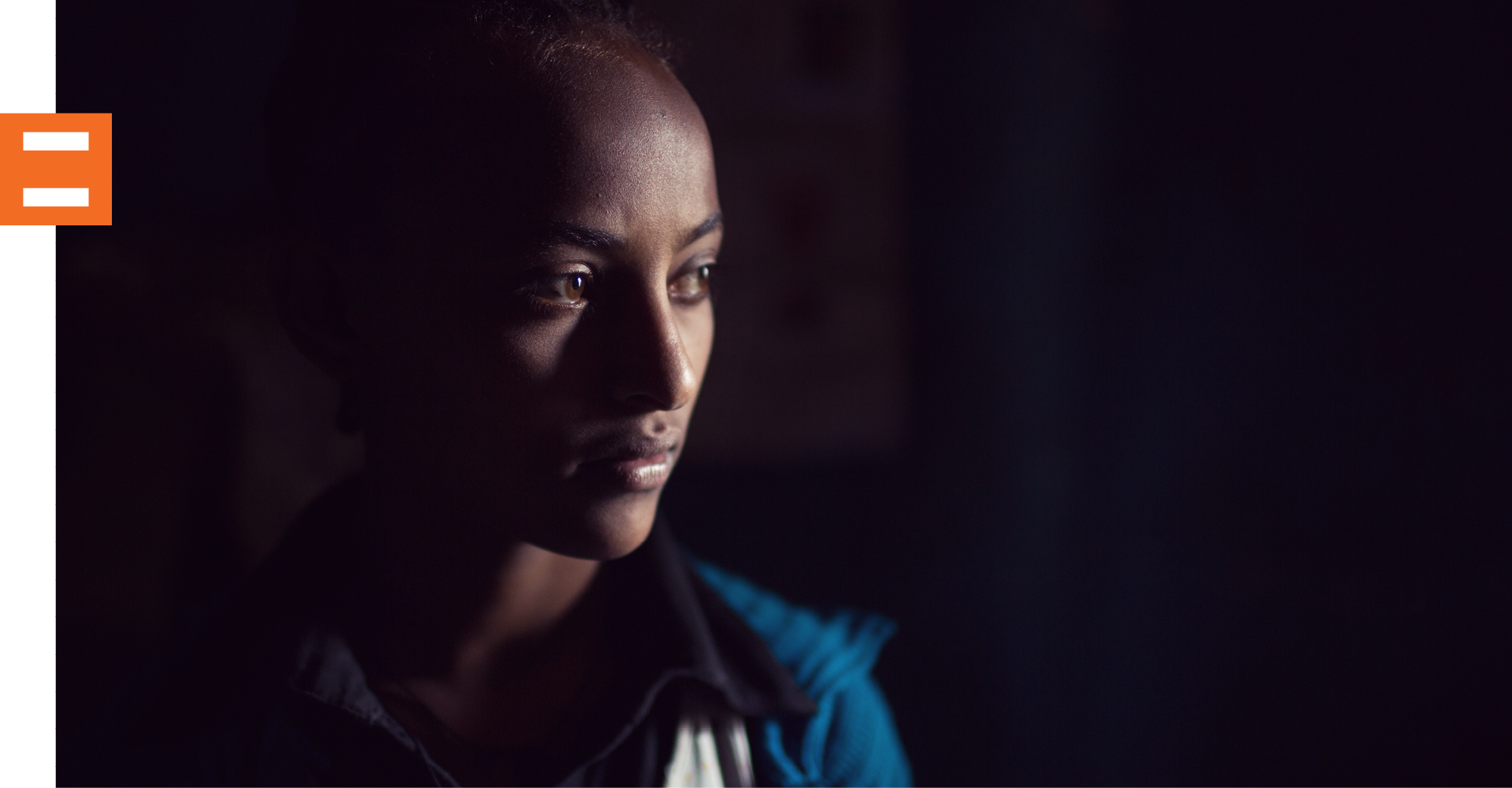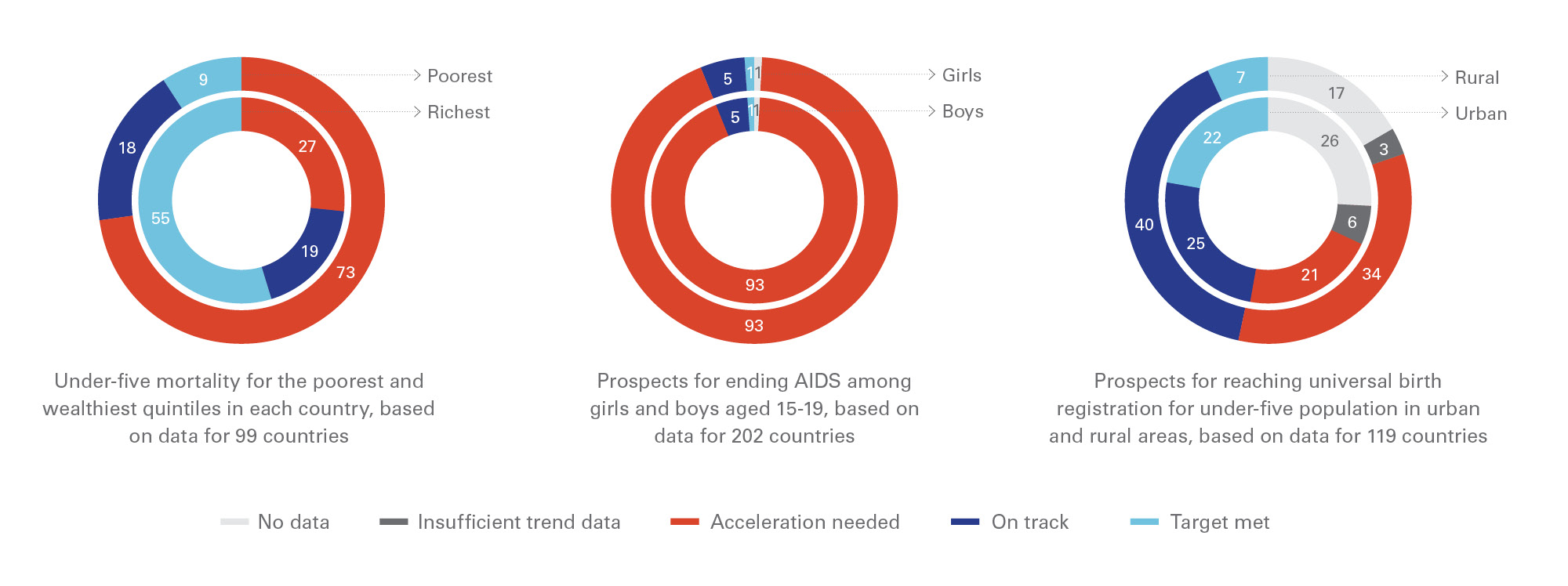
DOWNLOAD EXECUTIVE SUMMARY (ENGLISH) DOWNLOAD FULL REPORT (ENGLISH)
The extent to which the world delivers on the 2030 Sustainable Development Goals (SDGs) will directly affect the future of millions of children – and thus, our shared future as a global community. The SDGs are universal in scope, and their call to leave no one behind puts the world’s most vulnerable and marginalized people – including children – at the top of the agenda.
But two years since world leaders committed to achieving the SDGs, are we on track to achieve the goals for children? Do we even have enough information to know?
Progress for Every Child in the SDG Era assesses the world’s performance to date, focusing on 44 indicators that directly concern 2030’s most important constituency: children.
44 child-related indicators are integrated across the 17 SDGs. This report arranges these indicators into five dimensions of children’s rights.






The children at greatest risk of being left behind
The SDGs’ guiding principle to leave no one behind demands a look beyond national averages to see which children and communities are missing out, and why. But data quality and collection practices are often not up to the task. Internationally comparable, disaggregated data are available for relatively few indicators – especially in some areas, such as for learning.
Existing disaggregated data reveal stark inequities related to household wealth, urban or rural residence, or gender. Other relevant stratifiers, such as ethnicity, disability or migration status, are not captured here given data limitations. And there are very limited data on some of the world’s most vulnerable children – like those living in institutions or on the streets – as they may not be captured in household surveys.

Universal agenda, universal challenge
Progress for Every Child in the SDG Era reveals the magnitude – and the urgency – of the challenge: On average, 75-80 per cent of child-relevant indicators in each country either have insufficient data or show insufficient progress to meet global SDG targets by 2030.
Data from many developing countries are unavailable for different reasons. In some cases, countries are constrained in their data collection efforts by capacity or other technical challenges. But whatever the reason, a paucity of data about the situation of children will also constrain countries in their efforts to achieve the SDGs. And if incomplete data mask poor performance, the challenge is even greater than it appears.
To change the situation of children, count them
There is much talk among the global development community of a data revolution already in the making that can enable transformational change for the world’s most disadvantaged and vulnerable people. But the data in our report tell a different story: The gaps in our knowledge are vast, and progress is too slow to achieve the SDGs. And despite the aspirations of Agenda 2030, at this stage, a great many children are being left behind.
We know that progress is possible on data. Some countries, regions and sectors have shot ahead, advancing new data initiatives that make the most of often limited resources. These positive outliers demonstrate that much can be done to remedy the data deficiencies that keep the most vulnerable children invisible and unreached. We identify four common factors that lie behind these successes:
- Global leadership
- Regional cooperation
- Technological innovation
- Advocacy
Practical principles to strengthen data for children
These four examples show that progress can be made – and made rapidly – to collect and use SDG data in support of children. Governments are ultimately accountable to generate the data that will guide and measure achievement of the 2030 Goals. But their partners in the international community have an obligation to support their efforts drawing on their individual strengths. This is the basis for SDG 17, which calls for a revitalized global partnership for sustainable development, including to develop countries’ statistical capabilities.
We identify three principles that should underpin this effort and that will guide UNICEF’s work over the next 12 years:
- Data as the spine of system strengthening
- Leave no country behind
- Shared norms beginning with open data
Country Profiles
In addition to analysing all countries together in each thematic chapter, this report is accompanied by a collection of 202 country profiles. Each profile provides a stocktaking of the country’s performance against the 44 child-related SDG indicators.
COUNTRY PROFILES DASHBOARD METHODOLOGY NOTE
Methodology note in French and Spanish
* How to read the dials:
In the analysis for this report, 39 indicators were assessed for progress, subject to availability of data. Whenever possible, trajectories for the indicators were established to determine whether: the associated global targets have already been met; the current trend would lead to achievement of the global targets; or progress would need to speed up to achieve the global targets by 2030. In some cases, there are no data or the available data are not sufficient to calculate a trend, making it impossible for the assessment to determine a trajectory.
The results of this analysis are presented in a series of dials, which appear in figures throughout the report. Each dial has five categories:
- Target met – the country has already achieved the global SDG target.
- On track– the current rate of progress is sufficient to achieve the globaltarget by 2030.
- Acceleration needed– on current trends, the global target will not be met by 2030.
- Insufficient trend data– there are not enough data points to establish atrend and make a projection to 2030.
- No data– internationally comparable data of sufficient quality, coverage and recency are not available in UNICEF global databases.
